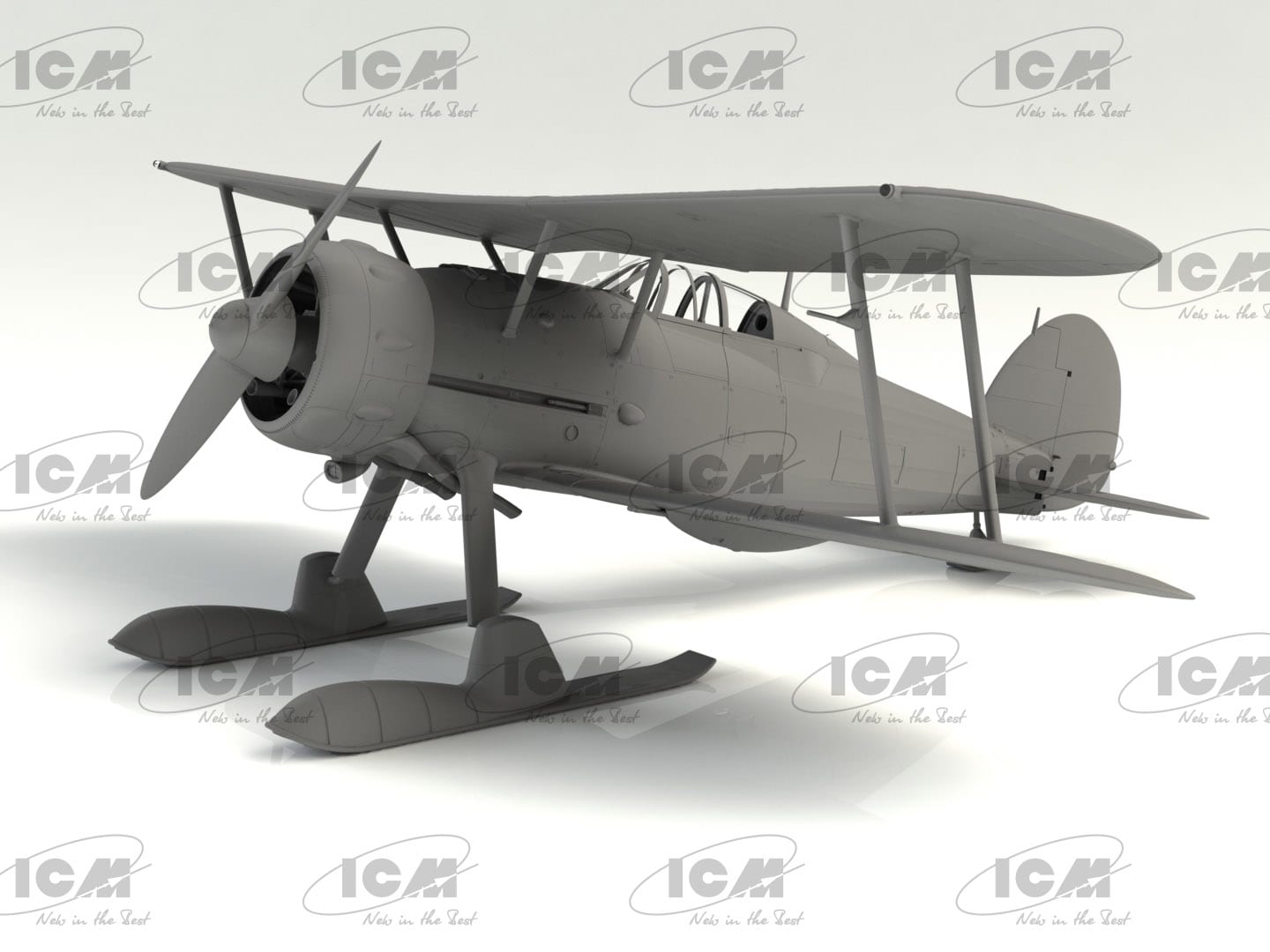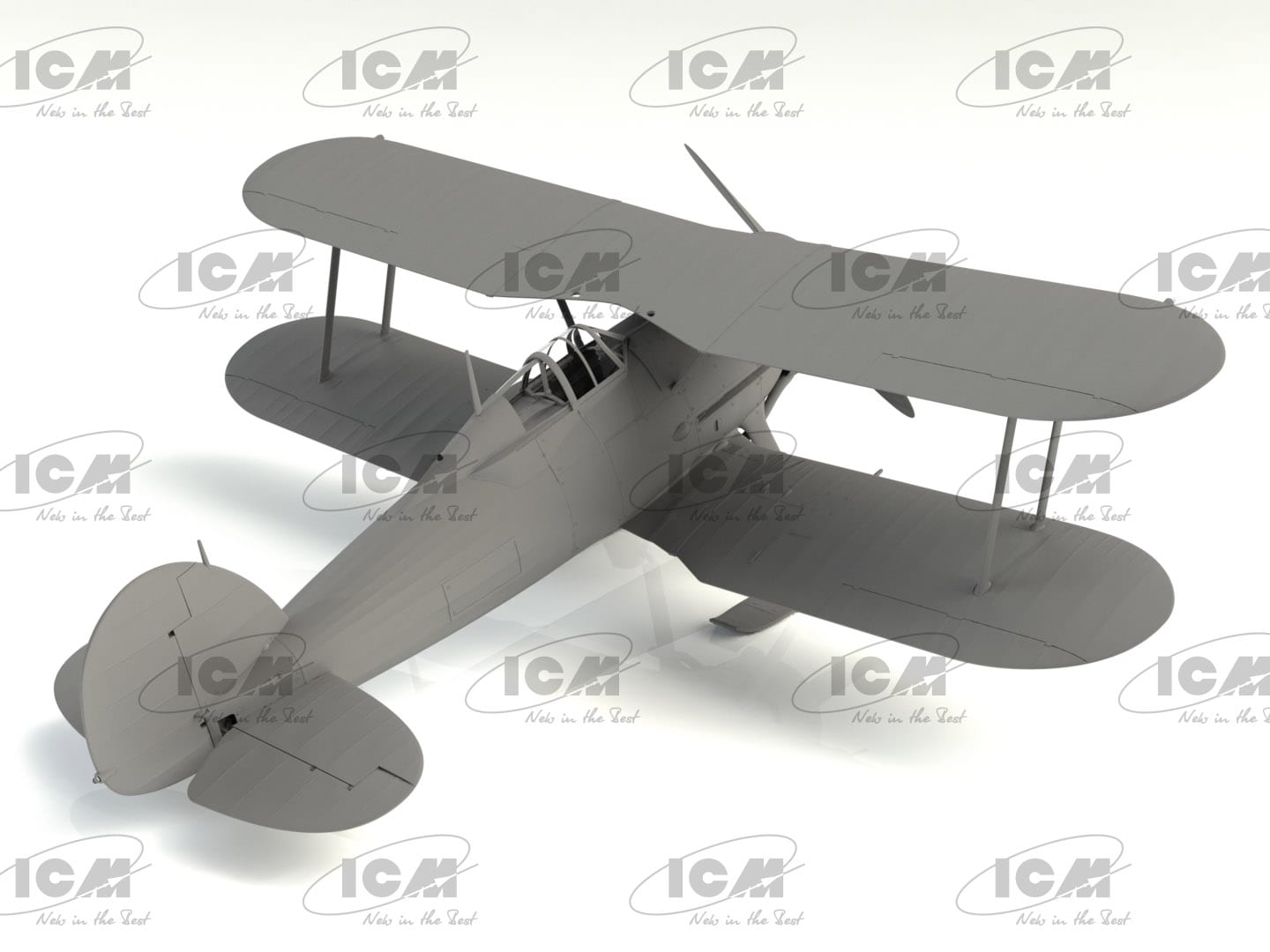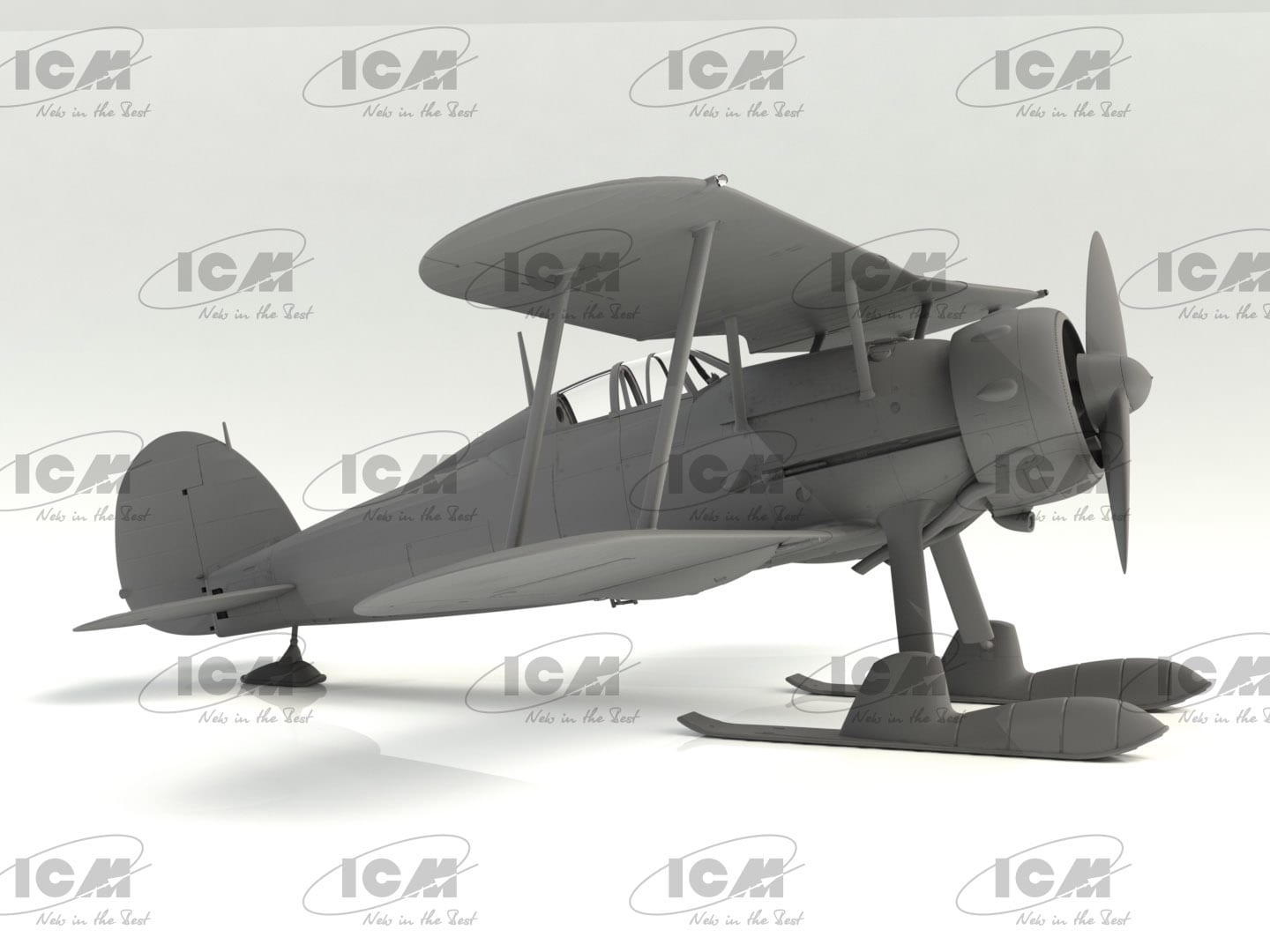J-8 Gladiator, WWII Swedish Fighter 1/32
47,16€
Only 1 left in stock

*Please check our Privacy Policies to see how to we use your personal data.
*Por favor revisa nuestra Política de Privacidad para ver como tratamos tus datos personales
In 1936, a new defence resolution was made by the Swedish defence ministry to organise one new fighter wing and four new bomber wings in light of rising tensions in Europe. After a selection process, the Gloster Gladiator was found to be the aircraft most suited to requirements, and an order was made for 55 aircraft, which were to be locally fitted with engines and armament.
The first Gloster Gladiator was delivered to the Swedish Air Force on April 15th 1937 and locally designated as the ‘Jaktplan 8’ (J8). While the first few Swedish Gladiators were fitted with the Fairey three-bladed propeller, the decision was taken to switch back to the earlier fixed-pitch two-bladed wooden propeller. The first 37 aircraft were built to Gladiator Mk.I standard with a 645 hp NOHAB-built Bristol Mercury VIS2; the last batch of 18 aircraft were built to Gladiator Mk.II standard with an 840 hp NOHAB-built Bristol Mercury VIII. The former batch thus became known as the J8, while the latter batch was known as the J8A.
Initial impressions of the Gloster Gladiator were mixed: the type was brand-new (having first flown in 1934 and having entered RAF service in February of 1937), but already conceptually outdated in comparison with types such as the German Bf 109, British Hawker Hurricane and the American P-35. As a result, more modern types were urgently sourced. International events led to the Swedish J8 to have their combat debut in 1939 – albeit not under Swedish colours. Following the invasion of Finland by the Soviet Union on November 30th 1939, numerous countries offered military support to Finland, including neighbouring Sweden which went as far to form a volunteer squadron – Flygflottilj 19 – which would enter combat under Finnish colours. The F19 Wing consisted of 12 J8A Gloster Gladiators.
Early January 1940, the F19 Wing entered combat on January 12th 1940 with a raid on Soviet troop concentrations and air bases near Märkäjärvi, Salmijärvi and Salla. While the Hawker Hart bombers fared rather badly against enemy opposition the Gloster Gladiators went on to do rather better during their deployment
En 1936, el Ministerio de Defensa sueco adoptó una nueva resolución de defensa para organizar un nuevo ala de caza y cuatro nuevas alas de bombarderos a la luz de las crecientes tensiones en Europa. Después de un proceso de selección, se descubrió que el Gloster Gladiator era el avión más adecuado a los requisitos, y se hizo un pedido de 55 aviones, que debían equiparse localmente con motores y armamento.
El primer Gloster Gladiator fue entregado a la Fuerza Aérea Sueca el 15 de abril de 1937 y designado localmente como “Jaktplan 8” (J8). Si bien los primeros Gladiadores suecos estaban equipados con la hélice de tres palas Fairey, se tomó la decisión de volver a la anterior hélice de madera de dos palas de paso fijo. Los primeros 37 aviones se construyeron según el estándar Gladiator Mk.I con un Bristol Mercury VIS2 de 645 hp fabricado por NOHAB; el último lote de 18 aviones se construyó según el estándar Gladiator Mk.II con un Bristol Mercury VIII de 840 hp fabricado por NOHAB. El primer lote se conoció así como el J8, mientras que el último lote se conoció como el J8A.
Las impresiones iniciales del Gloster Gladiator fueron mixtas: el tipo era nuevo (habiendo volado por primera vez en 1934 y habiendo entrado en servicio de la RAF en febrero de 1937), pero ya conceptualmente anticuado en comparación con tipos como el alemán Bf 109, el británico Hawker Hurricane. y el americano P-35. Como resultado, se obtuvieron con urgencia tipos más modernos. Los eventos internacionales llevaron al sueco J8 a tener su debut en combate en 1939, aunque no con los colores suecos. Tras la invasión de Finlandia por parte de la Unión Soviética el 30 de noviembre de 1939, numerosos países ofrecieron apoyo militar a Finlandia, incluida la vecina Suecia, que llegó a formar un escuadrón de voluntarios, Flygflottilj 19, que entraría en combate con los colores finlandeses. El ala F19 constaba de 12 J8A Gloster Gladiators.
A principios de enero de 1940, el Ala F19 entró en combate el 12 de enero de 1940 con un ataque a las concentraciones de tropas soviéticas y bases aéreas cerca de Märkäjärvi, Salmijärvi y Salla. Mientras que a los bombarderos Hawker Hart les fue bastante mal contra la oposición enemiga, los Gloster Gladiators lo hicieron bastante mejor durante su despliegue.
ESCALA
1:32
PERIODO DE TIEMPO
WW2
MARCAS
J-8A, No 284 amarillo F, ala voluntaria sueca Fl 9, piloto I.Lacobi, Finlandia 1940
J-8A, No 278 amarillo H, ala voluntaria sueca Fl 9, piloto M. Wennerstrom, Finlandia 1940
J-8A, No 278/48, Ala de caza F8, Barkarby 1939
TAMAÑO DEL MODELO (LARGO X ANCHO)
262 x 307 milímetro
TAMAÑO DE CAJA
410 x 260 x 55 mm
NÚMERO DE DETALLES
141







